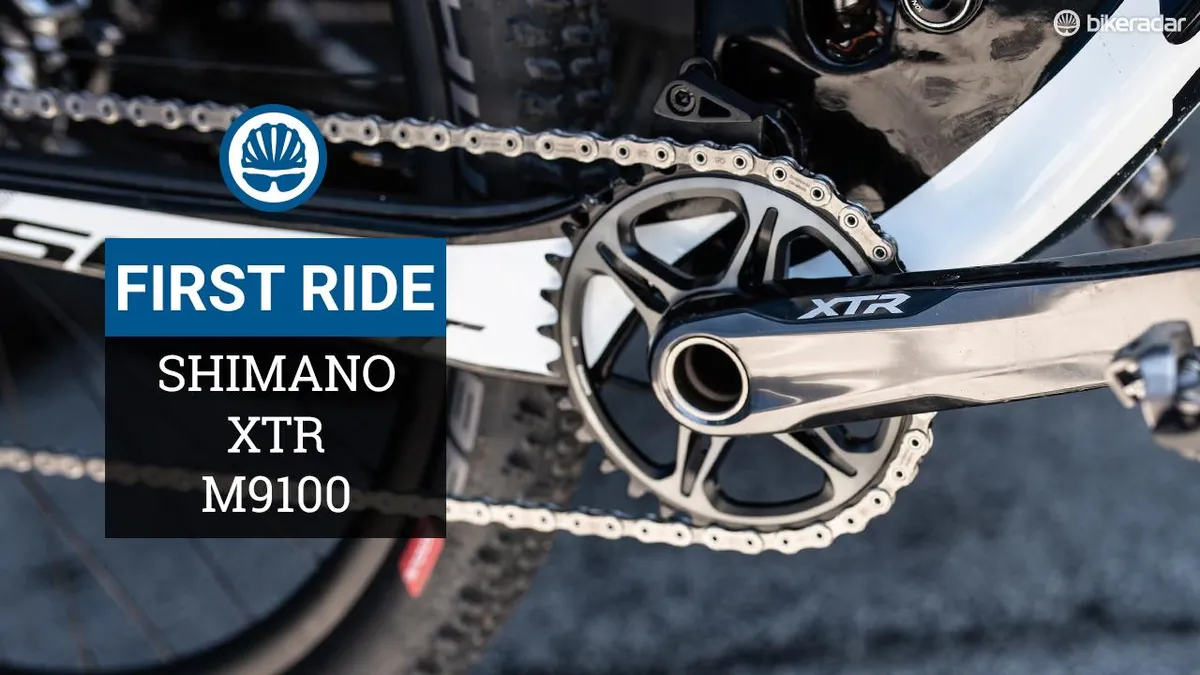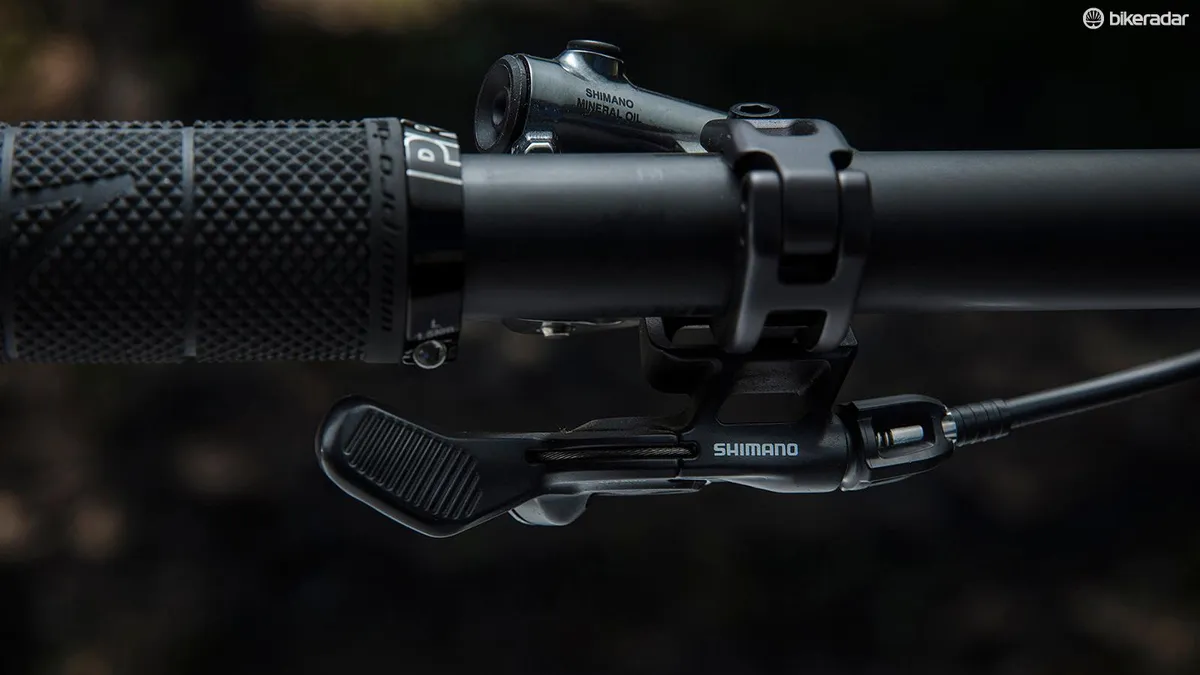The XTR M9100 groupset ushers in a wealth of improvements to Shimano’s top-end mountain bike component family. I recently had the opportunity to test the new wide-range 1x12 group as well as the new XC and Enduro brake systems over two days in the mountains surrounding Crested Butte, Colorado. My colleague, Tom Marvin, also spent time testing this new group on the rugged trails of Slovenia.
Here are the features of the new flagship group that stood out to us. Check out our Shimano XTR M9100: everything you need to know article for the complete tech round down.
Tom talks us through the smoother, faster and more versatile Shimano XTR M9100 groupset
The sweet sound of silence
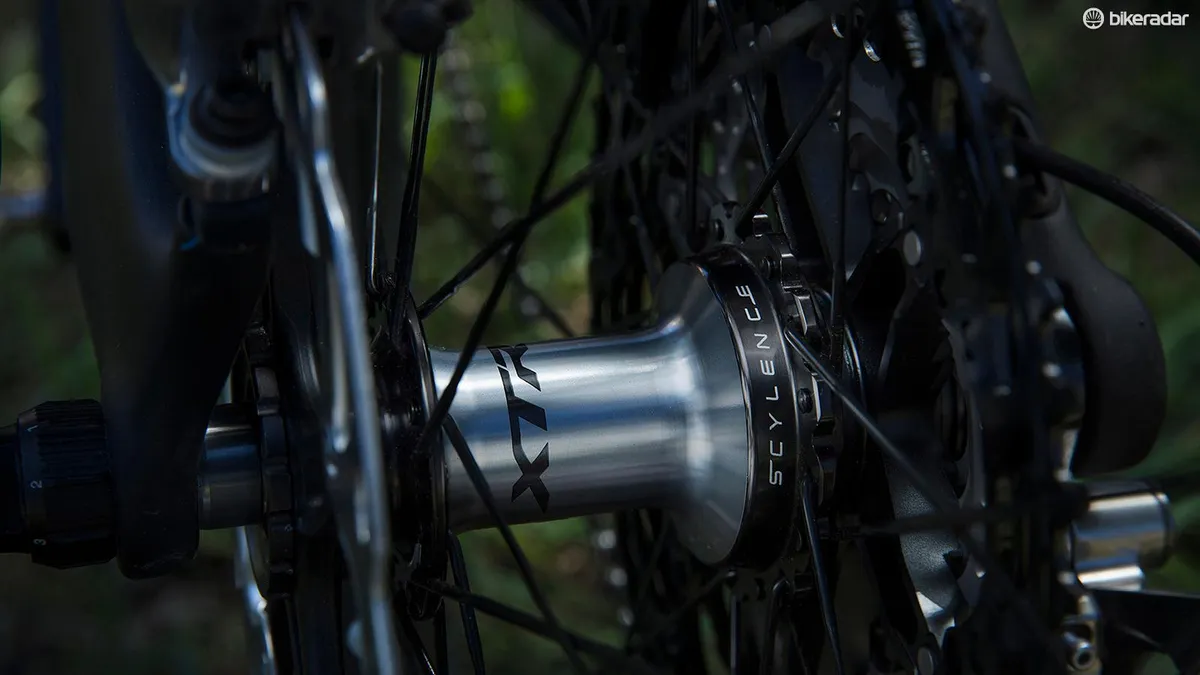
The most salient feature of the M9100 group is what’s missing — sound. Shimano’s SCYLENCE freehub system uses a pair of drive plates that completely disengage from each other when coasting.
Not only does this eliminate the ratcheting noise we’re accustomed to, it also reduces the small but sometimes noticeable amount of drag found in some rapid-engaging freehubs.
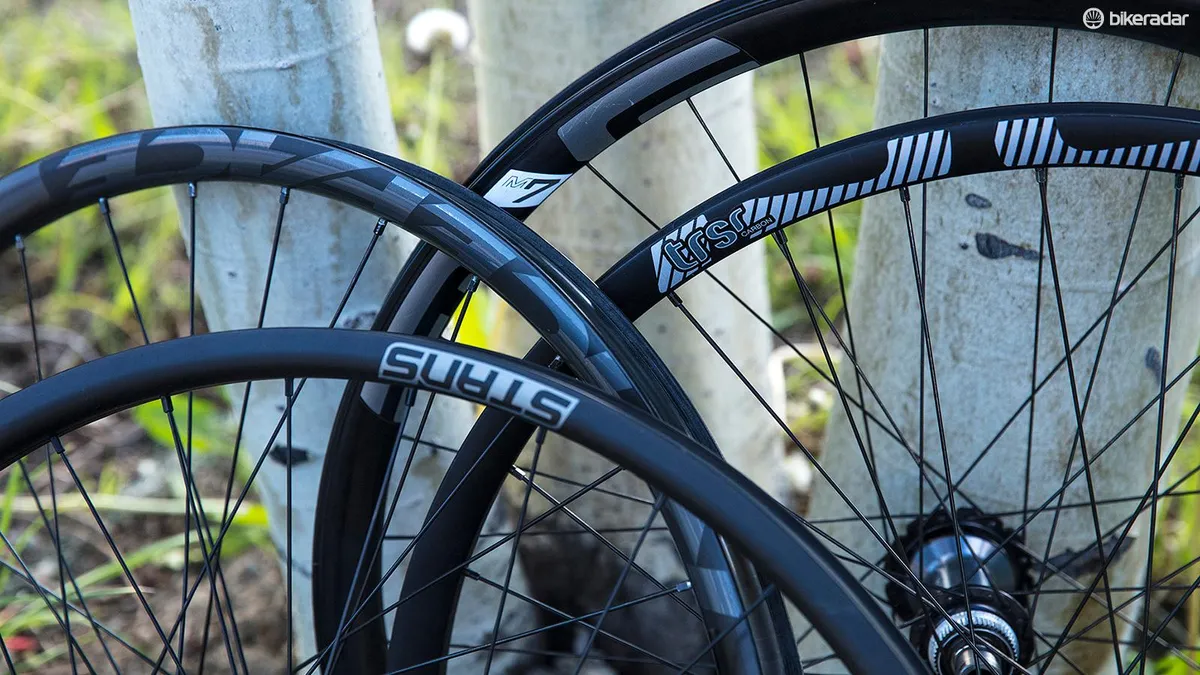
The 7.6 degrees of engagement is average in terms of pick-up speed. I’m generally a fan of speedy freehubs, particularly for technical climbs, but I didn’t find it too slow.
I really appreciated the fact I was able to hear the tires biting into the dirt. As a result, I was better able to predict the point at which I would lose grip though turns.
If there’s a downside to SCYLENCE, it’s that the noiseless freehub reveals every other sound that would have gone unnoticed. The clatter of housing, the squish of suspension and the creak of dusty pivots all become apparent when not muted by the drone of a noisy freehub.
Outstanding shift performance
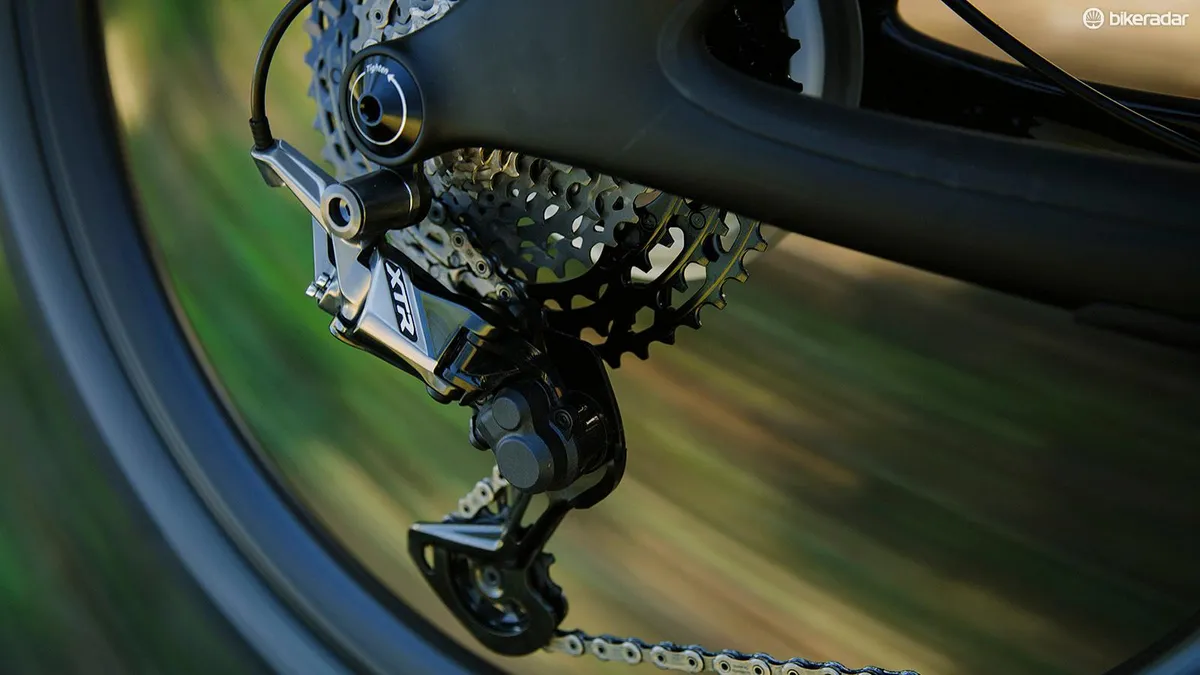
Shimano’s system engineering approach to product development sometimes frustrates consumers with a lack of compatibility between generations of products, but, as intended, it also results in impeccable performance.
Nowhere is this more apparent than in the shift performance of the M9100 drivetrain. From lever feel to the movement of the rear derailleur, every component has been improved.
Shimano claims it has lightened shift performance by 35 percent compared to the M9000 shifters. It achieved this through refinements to the rear derailleur’s parallelogram design as well improvements to the shift internals. I didn’t have the chance to test the two generations of shifters back to back, but the action is light and incredibly precise.
The ability to move down the cassette by one or two gears with a single push of the cable release lever is a valuable feature in a wide-range 1x12 drivetrain. This was the feature I missed most once I hopped back on a bike equipped with SRAM Eagle.
To prevent overshifting, Shimano intentionally added a bit more resistance after the first release shift to alert riders to the fact they are about to push into the second shift.
Tom and I both came away from our time on the new group impressed with this group’s ability to handle shifts in any direction under power. While the amount of force required to actuate a shift has been reduced, it feels as if Shimano intentionally adjusted the shift gates on the new cassette to make the shifts more positive. Past Shimano drivetrains have been smooth to the point of not providing enough tactile feedback to let riders know when a shift has been completed.
Smarter steps
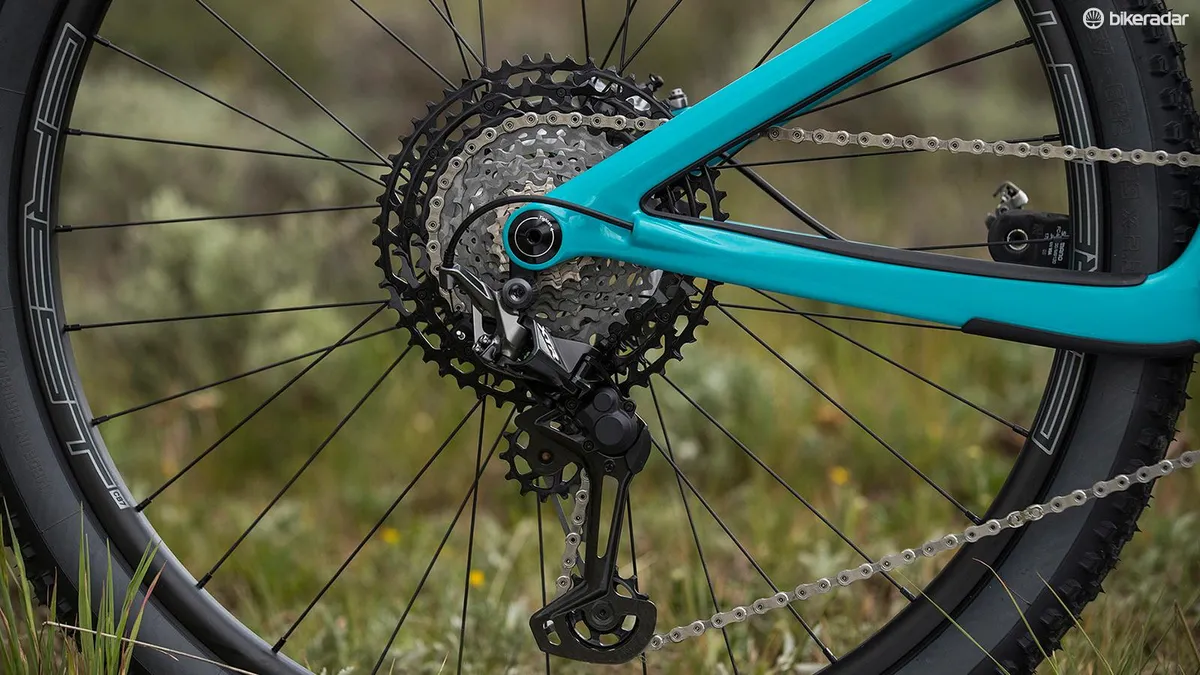
Both our test bikes were equipped with 1x12 drivetrains with wide-range 10-51t cassettes.
The one-tooth difference between Shimano and SRAM’s 12-speed systems might not seem like much. According to Shimano, it wasn’t a matter of out-gearing its competitor, but refining the location of shift ramps. It amounts to a 10-percent difference in range. I would find it difficult to tell if I was in a 50- or 51-tooth bailout gear in a blind test.
What isn’t subtle is how much better Shimano’s cog selection is as you approach the lowest gear. SRAM’s jump from 42 to 50t feels drastic in comparison to the smaller 45 to 51t jump on the CS-M9100-12 cassette.
This gearing results in a less drastic change in cadence when climbing. It’s also a welcome improvement on Shimano’s 11-46t XT M8000 cassette and the awkward transition from the 37 to 46t cog that made this cassette feel like an afterthought.
Shifter ergonomics are improved, but not otherworldly
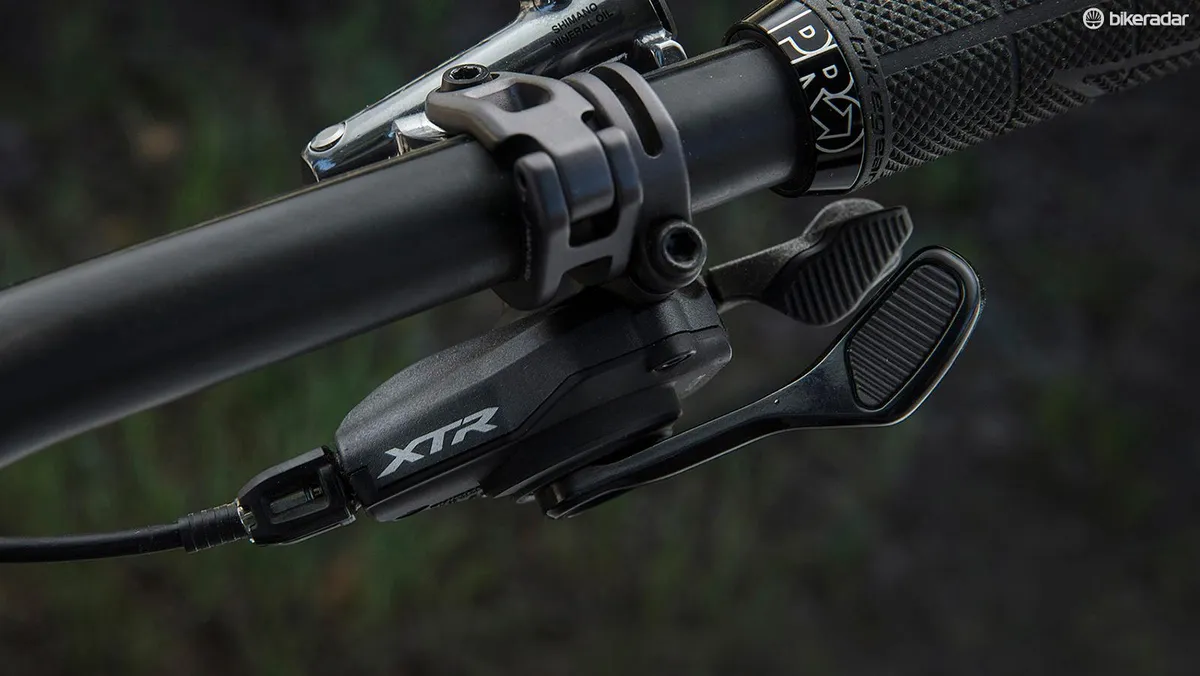
Shimano has lead SRAM in terms of shift lever ergonomics and continues to do so, though after spending time shifting through the gears, the company’s claim of reduced shift time seems subjective.
Like the sport itself, mountain bike shifting is very dynamic. The angles at which the rider approaches the shifters will vary greatly when climbing, descending, sprinting out of the saddle, and riding seated. As such, it’s difficult to optimize shift paddles for every possible articulation of the rider’s wrists.
Thankfully, the shift paddles are very easy to customize to the position you find most comfortable, which may be more important than shaving a fraction of a second off in shift performance.
While I was unable to detect a significant improvement in shift speed, I was impressed with the SM-MT00-IL dropper seatpost lever.
Shimano claims the shape mimics the cable release paddle, rather than the larger cable pull lever that most dropper levers imitate. In reality, it still feels and performs much like the cable pull lever.
It can, however, be positioned to sit low under the handlebar. I found this position allowed me to move my thumb less when reaching for the dropper lever. Tom didn’t get along as well with this lever as I did and thought it sat too close to the handlebar.
Improved brake systems
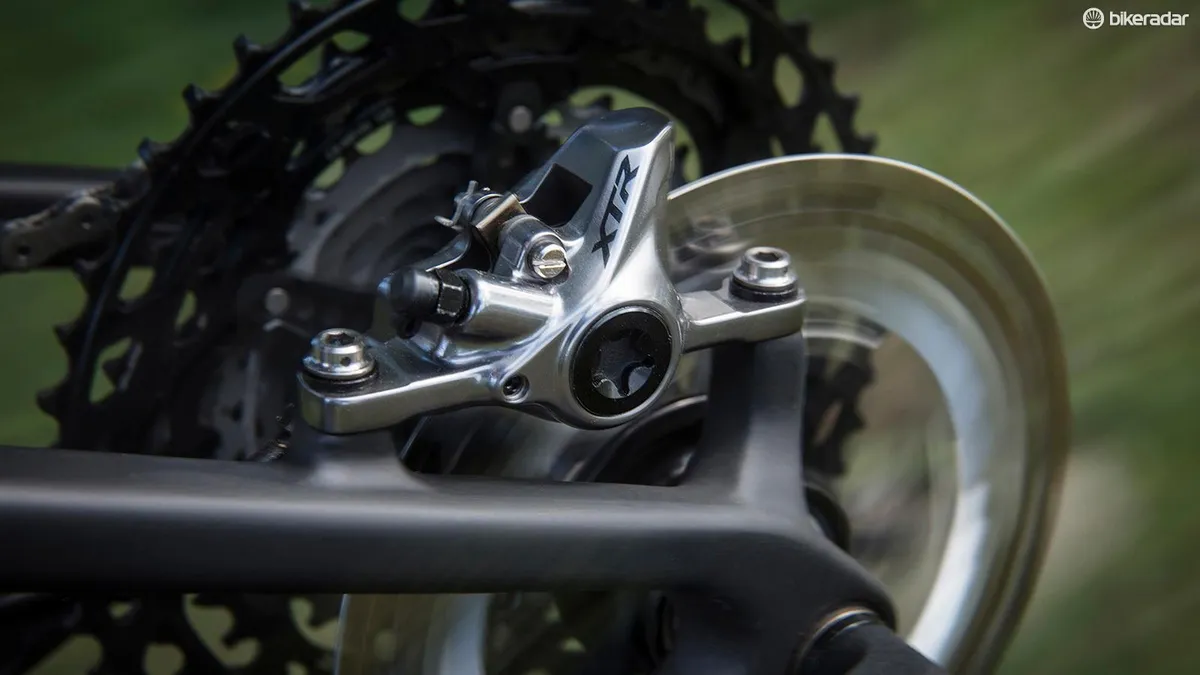
In addition to testing the new drivetrain, our test bikes were equipped with the new XTR Cross-Country and Enduro brake systems.
Both systems were redesigned to be more consistent under hard braking. Shimano achieved this by moving the handlebar clamp to the center of the lever body and adding a support at the end of the body that sits against the handlebar. This arrangement prevents the lever body from flexing when the lever is pulled.
The two-piston XTR Cross-Country brakes have retained the carbon brake lever of the previous version with a slightly revised shape. On the trail, these lightweight hydros did their job without issue. They lacked the wider range of modulation of four-piston brakes, but I was never left wanting for power.
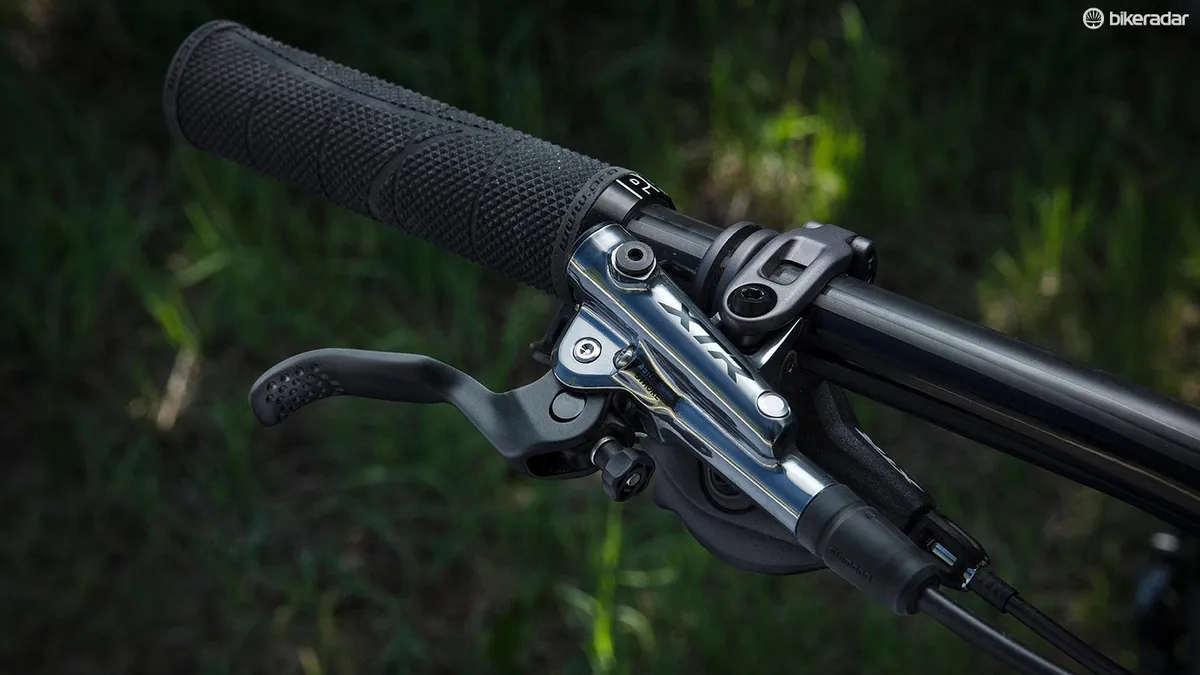
There was a more noticeable improvement in the four-piston XTR Enduro brakes. Shimano took lessons from some of its sponsored enduro racers who ran XTR brake levers with Saint brake calipers in order to combine the Saint’s stopping power with improved modulation.
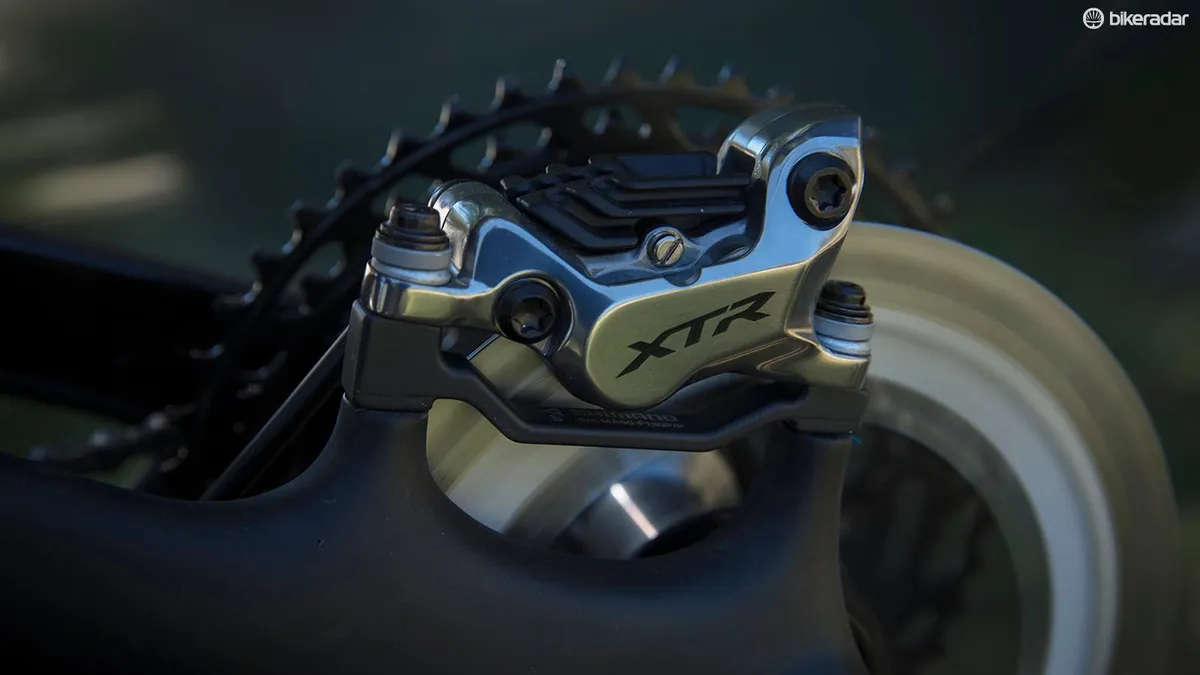
According to Shimano, these new brakes have the same amount of power as the downhill-designed Saint stoppers. The difference in feel rests in the design of the Servowave system on the BL-M9120 levers. They allow for a more gradual onset of braking power.
This broad range of modulation allows for subtle feathering. I found this very useful when navigating decreasing radius turns and was able to check my speed without worrying about locking up the wheels.
Shimano XTR M9100 groupset early verdict
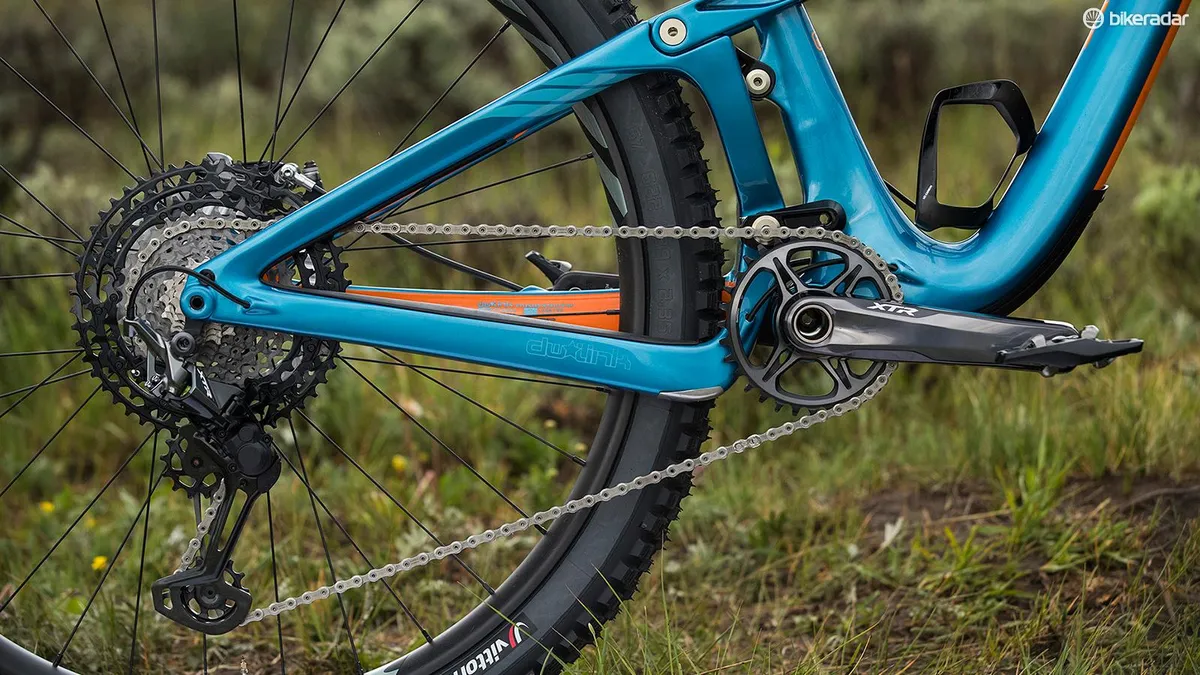
Shimano has chased SRAM’s market dominance since 1x drivetrains became the norm. This latest XTR group doesn’t give Shimano the lead in the market, but it’s clear the Japanese company is keenly aware of the direction the sport is heading.
Shift performance and gearing are better than the competition, but it will take a significant trickle-down of technology to the XT and SLX levels to regain the lead.

